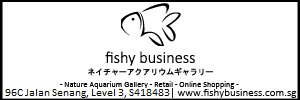Stupid newbie question (or question from stupid newbie)
Hi all! 
New to the forum. I'm almost a total newbie regarding killies (although I'm no newbie aquarist---I forgot more about aquaria and cichlids that most people ever learn :P ).
I just moved back home, and are starting with aquaria all over again, and staying small. So I was presented with a gourgeous young F0 pair of Austrolebias nigripinnis "Punta Lara" KCA 02/06, which I keep in a 12 liter planted tank, no filter no aireation. The fishes often stay close to the surface. For most fish, this would make me think of low oxygen or too much CO2, but I know many killies are surface-associated fishes, yet I am a little worried, since Austrolebias doesn't look very much like such a surface-loving fish. The breathing rate seems normal, and the plants are pearling, even the Taxiphyllum sp..
Second, I am feeding tubifex only, and I think they could use some hard-shelled food, since the feces are often stringy. Am I right? In a pinch, what other kind of live food, most likely some crustacean, can I add? I may be able to get some daphnia later, but supply is not reliable, and myself culturing them is out of the question. So, will artemia nauplii do? Are they too small?
Third: the fishes often enjoy some frolicking and peat-diving, but I can't see the female getting any slimmer, so I wonder whether eggs are being laid. Aside from visual examination of the peat, can you tell when these fishes lay eggs, or is the change too subtle to notice?
Fourth and last: I've been doing quite a lot of RTFM, but I just can't fint this info: how many eggs will a female of this species lay? Tens? Hundreds? Thousands? Fishes vary a lot in this regard, even similar ones (e.g. a female Claustroheros nigrofasciatus will lay less than half the number of eggs a female Herotilapia multispinosa would, even when the 2 species are rather closely related cichlids of similar body size laying eggs of similar sizE).
Thanks! 
Gustavo
Do not meddle in affairs of cichlids 4 they r subtle & quick 2 anger
I hope to visit BA in a year or two, seeing the land of Gardel, Pugliese, De Angelis, Troilo, Canaro, D'Arienzo, Biagi, Fresedo and the rest.









 Reply With Quote
Reply With Quote


 ---so I bailed out ).
---so I bailed out ). 





Bookmarks